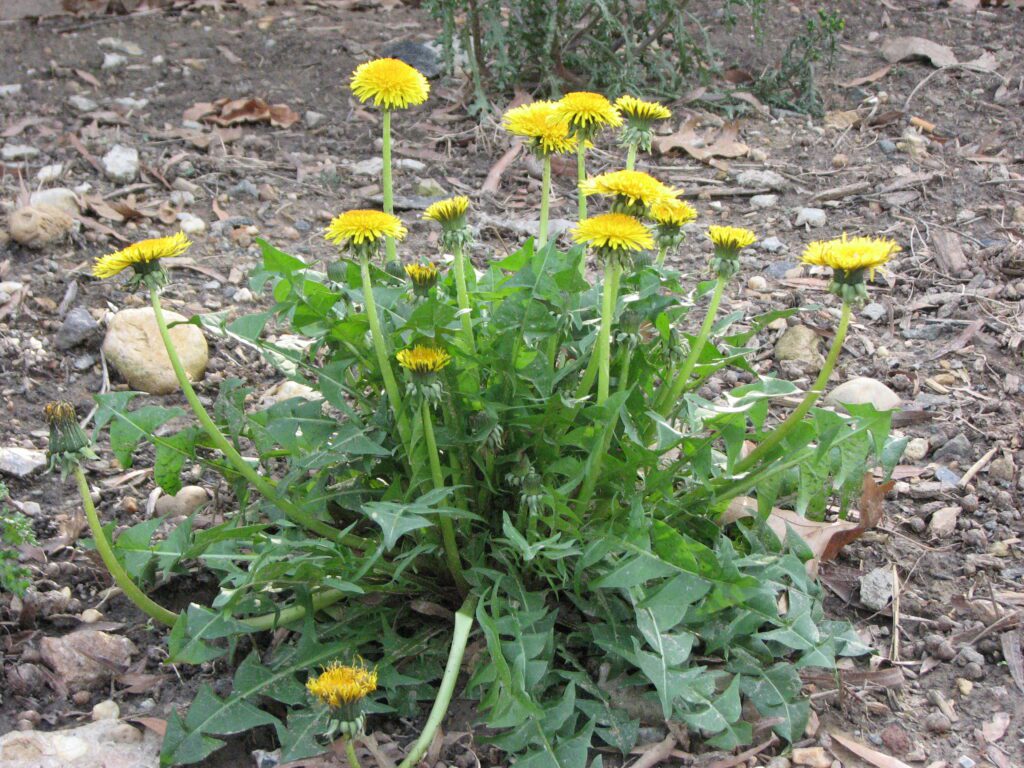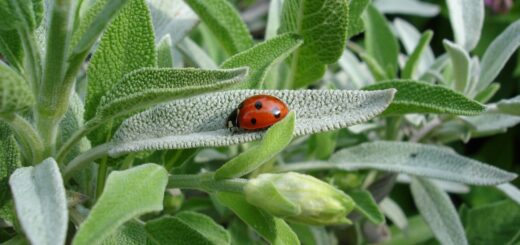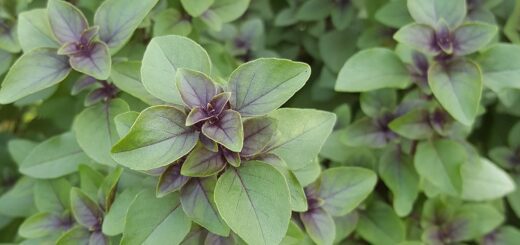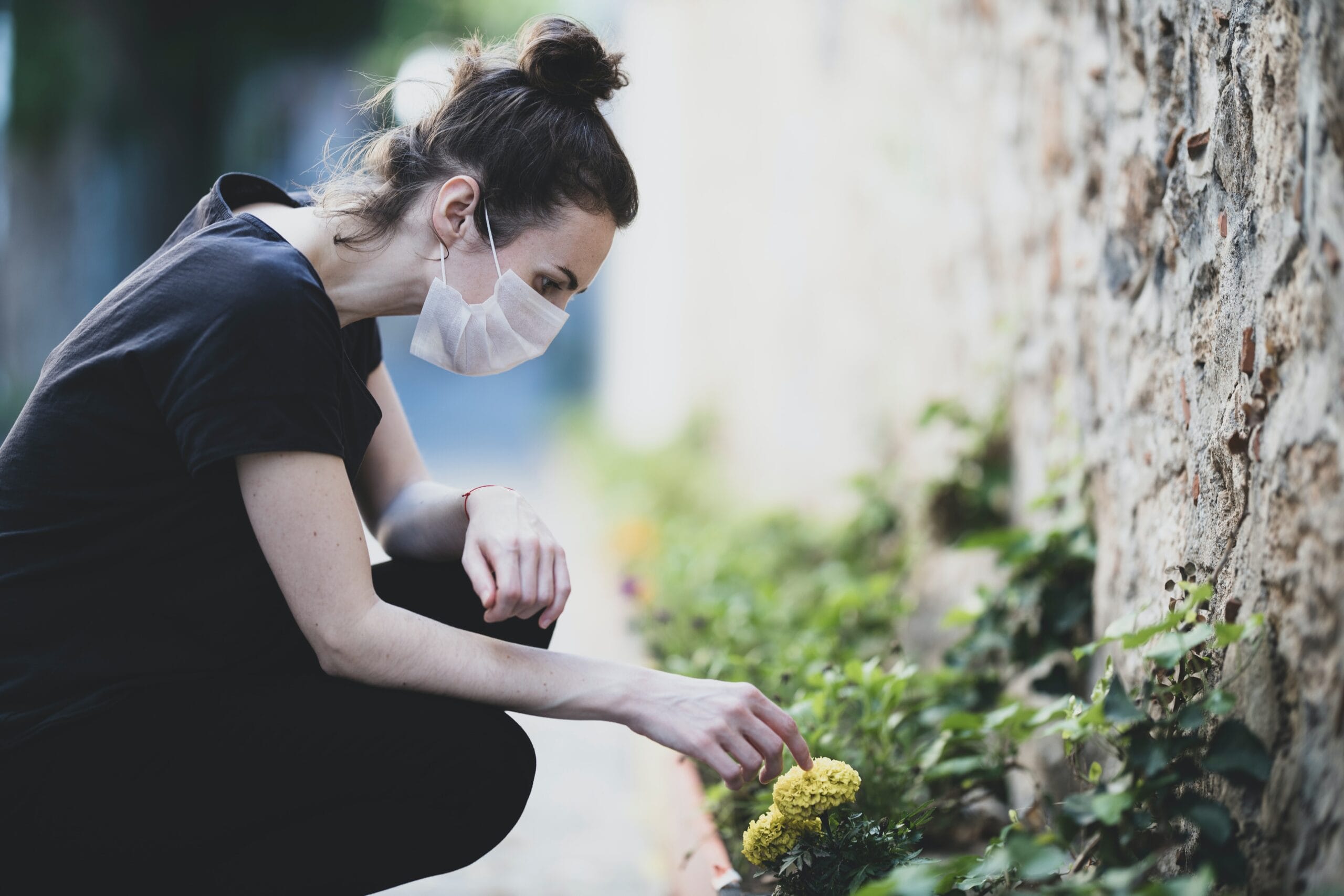Dandelion
Taraxacum officinale
Sprouting up in cement cracks and upon lawns across the globe, dandelion is one of the most well-known and widely recognised garden plants in our time. Stemming from the daisy or Asteraceae plant family, it is also one of the world’s oldest plants, with fossils containing dandelion discovered in Eurasia dating back some thirty million years. It is a herbaceous perennial, growing as a weed in temperate regions, but is indigenous to the Northern hemisphere, surviving with tending loving care for a number of years.
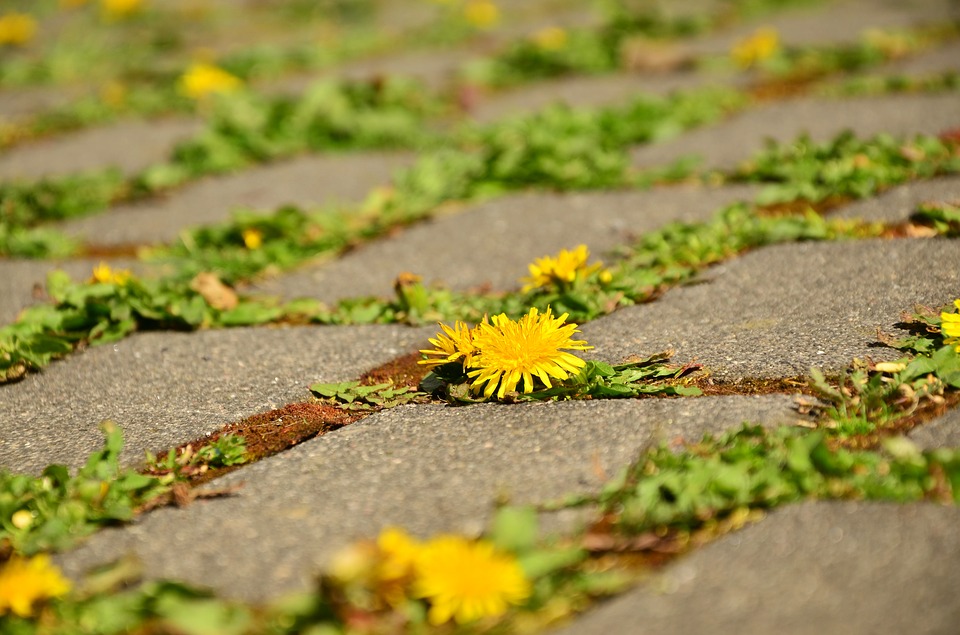
popping up in cracks in your neighbourhood
Despite a long history of medicinal and culinary use, there is perhaps no other plant as misunderstood, nor one that stirs such juxtaposed reactions in its beholders: from admiration in people aware of its virtues, to contempt in others by whom its systematic eradication becomes a mission. Dandelion’s presence however should not be eliminated in your garden. Instead getting savvy with its many uses, from culinary creations, to garden-growing superfood, it has a whole range of garden and health benefits that deserve recognition and appreciation, and which should save many places for dandelion in your nature spaces in times to come.
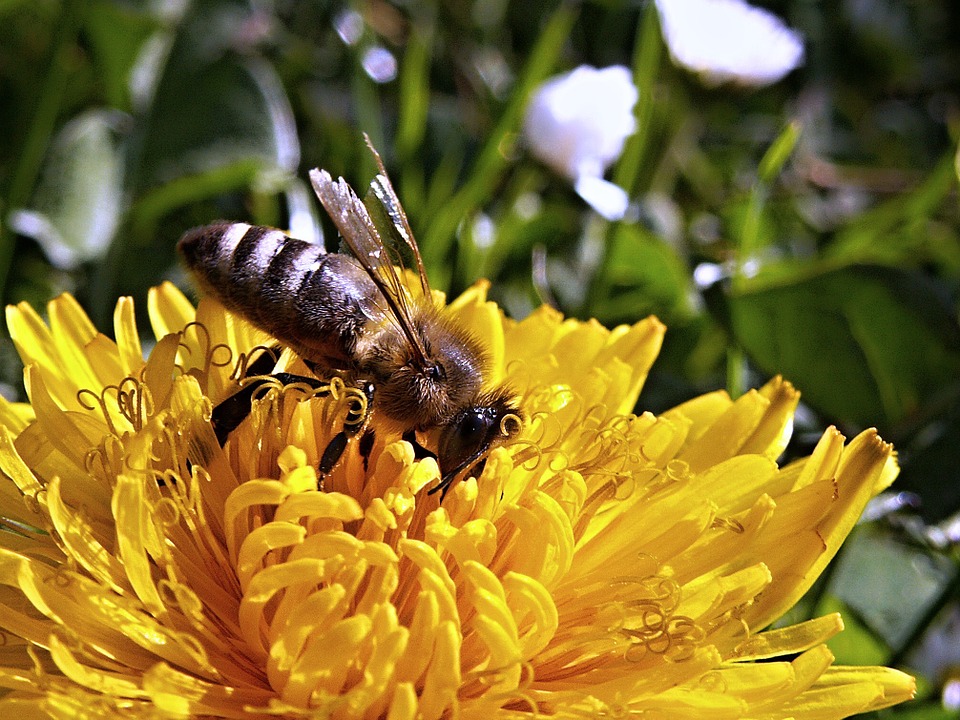
A bee loving some dandelion
In the garden
Dandelion is a plant that not only serves humans with benefits, but it also performs various pioneering activities in the garden. Adored by bees, and friend of the earthworm, the roots for example provide the humble earthworm with not only food and shelter, but enable them access to the deeper, harder soils from where nutrients low in the earth can be brought up to be accessed more readily.
Pulled dandelion plants provide a gift to compost, where they help to activate decomposition of organic matter. The nutrient-rich composition of dandelions will also provide a deliciously nutritious mulch for plants.
A compost tea can be created from the pulled plants, so that dandelion’s nutrients do not go to waste. This is achieved by filling half a bucket with dandelions that have been cleaned of soil and other debris, filling the rest of the bucket with water, covering it and setting it away in the shade for about three weeks. This will produce a nutrient rich plant tonic concentrate for potted or other garden plants. It should be diluted with equal amounts of water prior to use.
Dandelion’s seeds are produced without pollination and therefore the offspring are genetically identical to the parent. Dispersed in the wind, the seeds seek out their own companions, which are never exclusive. However, dandelion’s growth and development are said to be benefited by the presence of geranium and viola, and to assist the growth of alfalfa.
Dandelion seeds or roots are ideally sown in spring, and are best deposited into moist compost or peat-containing soils with some light mulch. They reach tend to reach maturity in around three months. While at present, spring has come to pass for another nine months, foraging the wild plant leaves and flowers however, can be undertaken from early spring with the young shoots, through mid-summer.
The leaves tend to become increasingly bitter as the summer progresses, yet dandelions grown in the shade produce leaves that are less bitter. Another method to reduce this bittering process is to cover the plants with a bucket or box prior to this occurring, which is said to also increase their annual life span.
The dandelion plant is identifiable by their long, deep-reaching brown fleshy tap root from which arises a rosette of bright green toothy leaves. From these stems contain solitary bright yellow flowers. It is not to be mistaken for cat’s ear, from which the flowers arise from branched stems.
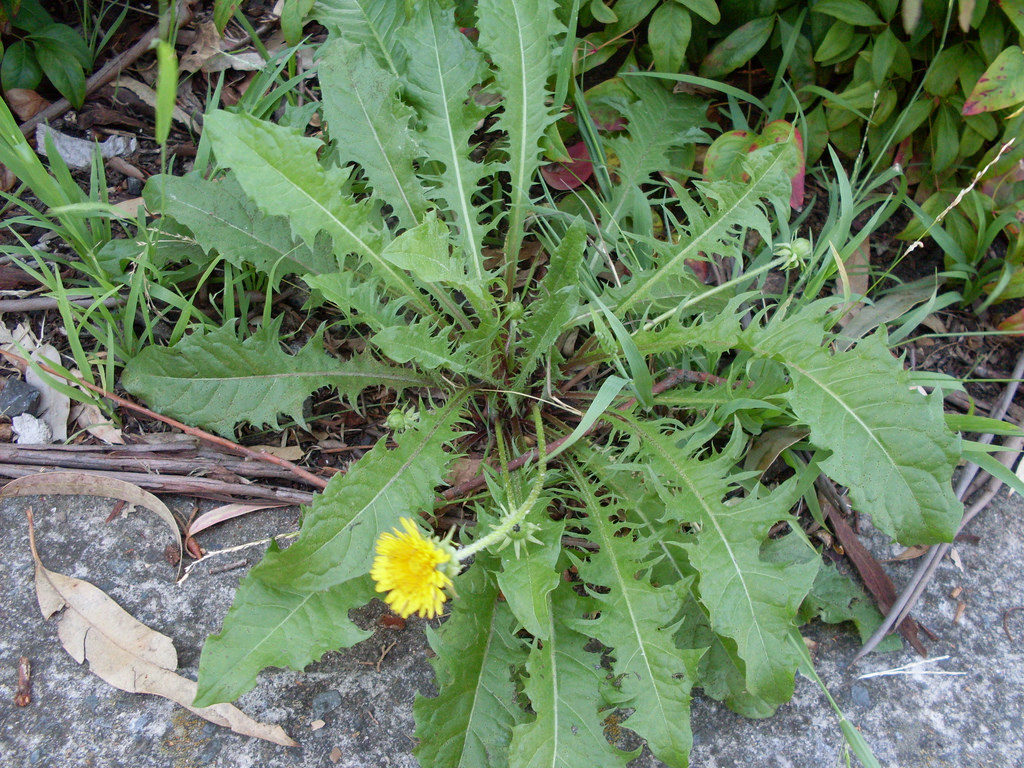
Traditional uses
The name comes from Greek word ‘taraxos’, meaning a disorder, and ‘akos’ meaning remedy. A common traditional name was ‘piss en lit’, which is French for ‘piss in the bed’, attributable to the diuretic effects of the leaves. Another common name was lion’s tooth. In the old
herbal texts, the leaves were drawn resembling the angular jaw and jagged teeth of lions, thought to explain ‘dandelion’ deriving from dente de lion, or teeth of lions. The lion-like characteristics are also reflected in the yellow mane of petals surrounding the central calyx.
Among other names have included swine snout, cankerwort, wild or white endive, blow ball and puff ball. These last two names conjour up visions of disco-like balls of silky pappus that are enjoyable to blow. Throughout time children have been known to count the number of blows to tell the time, disseminating the seeds come the end of summer. It also strikes up the image of an almost weightless single seeded fluff ball floating in the breeze, which when caught you can make a wish.
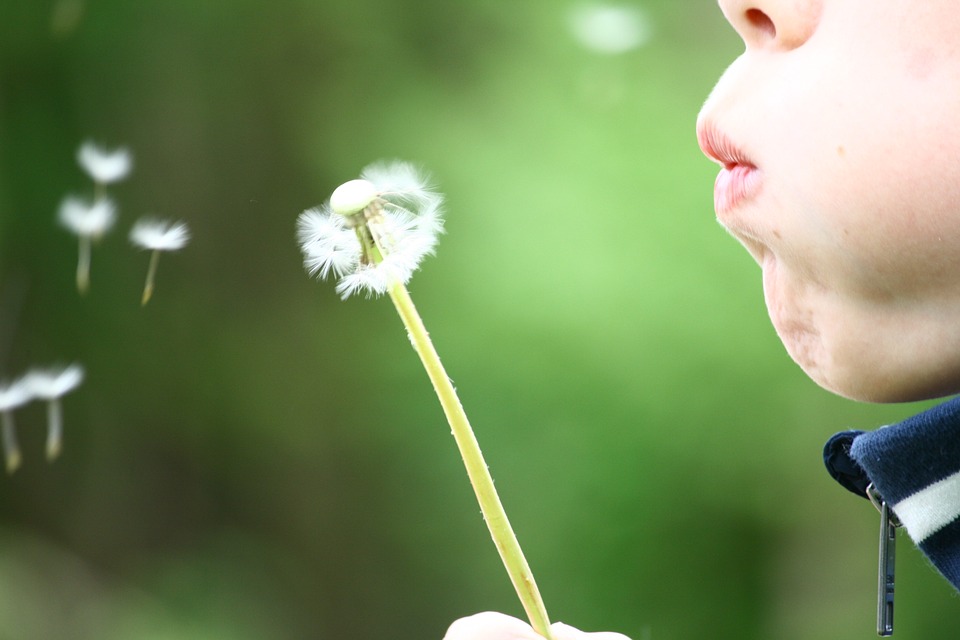
Spreading the seeds
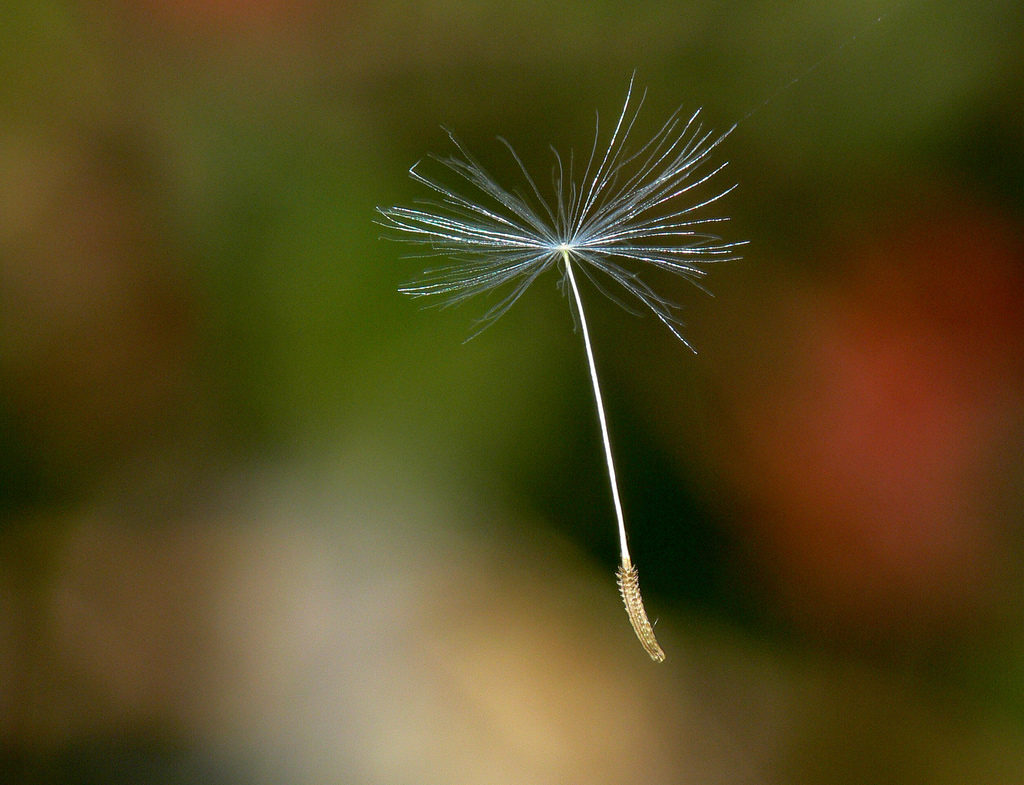
Dandelion has historically been considered a magical herb, capable of increasing one’s psychic abilities. It was a key plant in Samhain rituals in Gaelic festivals, marking the end of the harvest season, which corresponded with the Festival of the Dead, aka Halloween in the Northern Hemisphere.
Around the globe, dandelion has a long history of both traditional culinary and medicinal uses. While medicinal applications have shown some variations from time to place, there is overall consistency, with uses primarily for benefiting the liver and the whole digestive system, especially complaints associated with reduced appetite, constipation and dyspepsia. These uses were emphasised in early European medical texts, while at the same time on the other side of the world, native Americans heralded these same uses. They would also use the leaves topically as poultices for urticaria, eczema, and wound healing, with the latex from the split stem used to treat stings; and make tea of the leaves and roots for purifying the blood, alleviating menstrual cramps, and relieving the odd bout of constipation.
While ethnobotanists have claimed that dandelion’s earliest appearance in writing were in the bible’s reference of bitter herbs, traditional Chinese medicine (TCM) records apparently date back thousands of years. It has been used in TCM for not only liver and digestive complaints, but for infections, fever, snakebites, diabetes and cancer – especially breast cancer. It has also been used traditionally for rheumatic complaints, heart burn and bruises, and the sap has been applied topically to eradicate warts.
Dandelion is approved by Commission E (the expert German scientific advisory board) for increasing bile flow, stimulating diuresis and improving appetite and dyspeptic conditions, while ESCOP (European Scientific Cooperative on Phytotherapy) deems the root appropriate for restoring liver, gallbladder and digestive function.
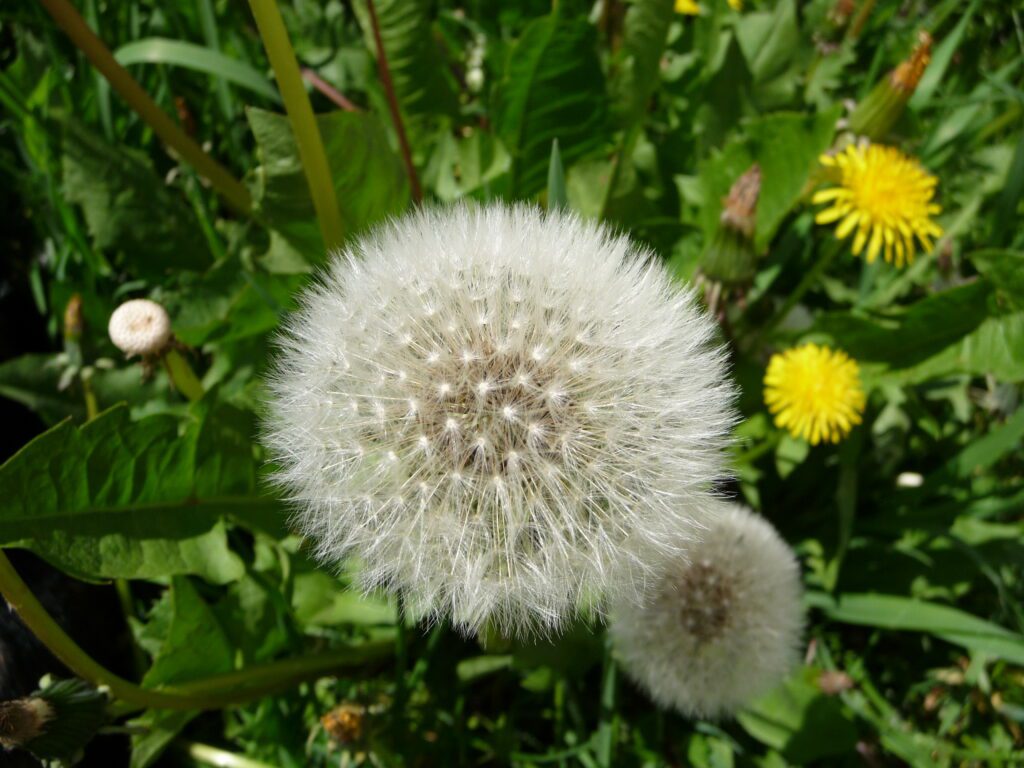
A ball of silky pappus that we all love to blow
As a medicinal gem
There have been very few clinical studies of dandelion and its medicinal potential to date, and most evidence has been derived from traditional knowledge, in vitro and animal studies. What has been established however, is that both the leaves and roots contain bitter (digestive), diuretic, laxative and anti-rheumatic constituents. These are more highly concentrated in the roots, which have been long considered a tonic for the liver. It is these bitters which are attributed to dandelion’s liver cleaning properties, giving rise to its ability to improve bile flow from the gall bladder, producing gentle laxative effects. It also helps to regulate enzymes associated with phase II liver detox. The root also contains oligo-fructans, polysaccharides, or complex carbohydrates, which stimulate the growth and proliferation of bifidobacteria strains, thereby demonstrating probiotic qualities. Stimulation of digestive processes is thought to occur rapidly, with just one dose of the root.
In TCM both dandelion leaves and roots have long been used to cleanse and attenuate hot and damp conditions of excess. Among such conditions include diabetes, jaundice, constipation, obesity, candida and genital herpes and influenza. The bitters are often attributable to attenuating these afflictions by producing cooling and drying and thereby reducing heat in not only the liver, put in the spleen, pancreas, lungs and heart. The sesquiterpene lactones are said to impart the bitter quality and produce anti-inflammatory effects, while the phenylpropanoids have also been shown to modulate inflammation. The root is considered primarily potent in antiviral and antifungal actions, and it is also used in cancer treatment.
Dandelion contains ample amounts of potassium, thereby replacing potassium that is otherwise eliminated in urine via its diuretic effects. The fresh and dried plant has demonstrated to alleviate stagnant conditions, with applications in arthritis and gout.
Dandelion flowers and leaves contain antioxidants including carotene and phenols. Extracts of the heads have been shown to suppress reactive oxygen and nitric oxide species, however the roots and stems have also shown hydrogen oxide scavenging abilities. Further anti-angiogenic (cancer-spreading), anti-inflammatory and nociceptive (neuropathic pain-relieving) actions have been shown via reduced nitric oxide production, COX-2 expression, and/or also by the antioxidant abilities. These antioxidative activities have been further demonstrated in aqueous or water-based extracts of the whole plant, which were shown to reduce diabetic complications in rats associated with lipid peroxidation and free-radical generation. Paradoxically, dandelion has been shown to reduce blood sugar in those with high levels, and conversely increase levels in those with low levels.
The Harvest
The first fresh shoots of dandelion in spring, through to younger leaves during summer are the best times to harvest the leaves. Best to dig roots in Autumn when they are two years old. By this time, they have developed optimal nutrient levels.
*Always ensure that the dandelion harvested is away from use of pesticides and herbicides, and not too close to roadside pollution.
In your diet
There are few other plants that give us the opportunity to eat as fresh and locally than the humble dandelion.
The entire plant is edible, from the root up to the stems, leaves and flowering heads, however the leaves and roots tend are the key plant parts used in Western herbal medicine. It is an extremely nutritious plant, with the leaves and roots rich in many vitamins including A, E, D, K, C, and a complex of B’s including niacin and riboflavin; and also minerals such as iron, magnesium, calcium, selenium, phosphorus, manganese, choline, copper, boron and silicon. Both the roots and leaves also contain decent amounts of protein, fibre, and the essential fatty acid linoleic acid.
*Just make sure the plants you are sourcing have not come from areas though where there have been herbicidal nasties sprayed!
In your kitchen
The leaves may be cooked in much the same way as most other vegetables. After washing them, leave the remaining water on the leaves and cook them in a pan with some butter. Delicious! Also, try them steamed, added to stir-fries, sautéed, or add them to soups or salads. Blanching them will remove some of the bitterness.
Dry the leaves for tea. Adding a little cinnamon, licorice or stevia leaf to your herbal bitter harvest can greatly improve its palatability for those with under-developed bitter taste buds.
The roots can be eaten as a root vegetable, or baked to make a coffee substitute. Dig up the two-year-old or older roots in Autumn, snip off the crowns from where the stems spring, give them a gentle wash and pat them dry, and bake them in a cool oven until they are dried. The baking time will depend largely on their age and size. To crisp the outer edges, turn up the heat a little for a few minutes, but be sure not to overdo it. I discovered once that it doesn’t take long for them to develop a smoked taste.
As a tea, the root combines deliciously with any number of spices from cardamon to cloves, and fennel to peppercorns, and is often served with milk and honey in health-conscious cafes.
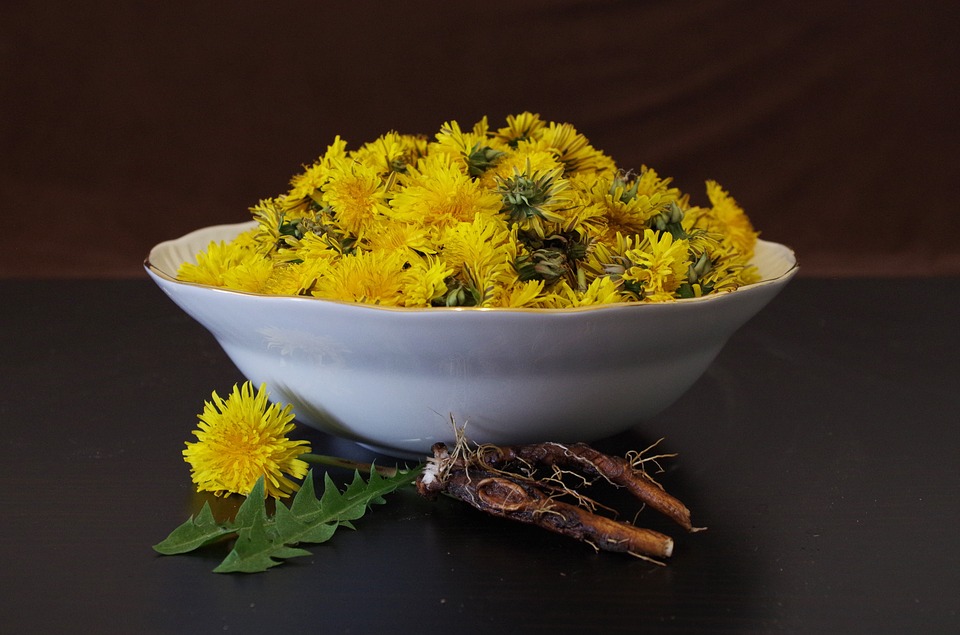
Flowers leaves and roots that can be prepared for tea
Therapeutic dosage
Infuse between 4 to 10 grams of the dandelion leaves each day, and take in divided doses.
2 to 8 grams of the roots can be taken each day, also in divided doses. The roots should be decocted, bringing them to boil and lightly simmering them on the stove (one tablespoon of the root per mug is a good rule).
Some cautions
Dandelion is generally considered a safe herb, however needless to say, it should be avoided where there is a known allergy to the Daisy family. Odd cases of contact reactivity producing dermatitis have been noted, but these reactions are thought more common to occur via cross contamination, wherein another Asteraceae plant is present.
Dandelion should be avoided where there is an occlusion of the biliary or intestinal tracts, or in cases where there is acute inflammation or serious diseases of the gallbladder. It may cause stomach hyperacidity, and aggravate already inflamed conditions. Also, it should not been taken therapeutically during pregnancy without professional advice.
Theoretical interactions with other diuretics are possible, and it should also be avoided while taking quinolone antibiotics, due to the minerals in dandelion forming complexes, which reduce this drugs absorption and bioavailability.
Some herb for thought
It is quite mind boggling to consider that dandelion is a plant predating humans by tens of millions of years. And since its origins in glacial and interglacial times or even earlier, it has become naturalised across the planet, becoming more widely known than perhaps any other plant.
While researching, and writing this piece, I’ve been contemplating our ancient roots. Not only the generations before us pre-electricity in the lower branches of our family trees, but of our ancestors before them who were deeply rooted and connected with the earth and all of nature. Their connection was not simply a necessity for survival, but enabled innate spiritual truths and meanings meaning for rich and deep experiences.
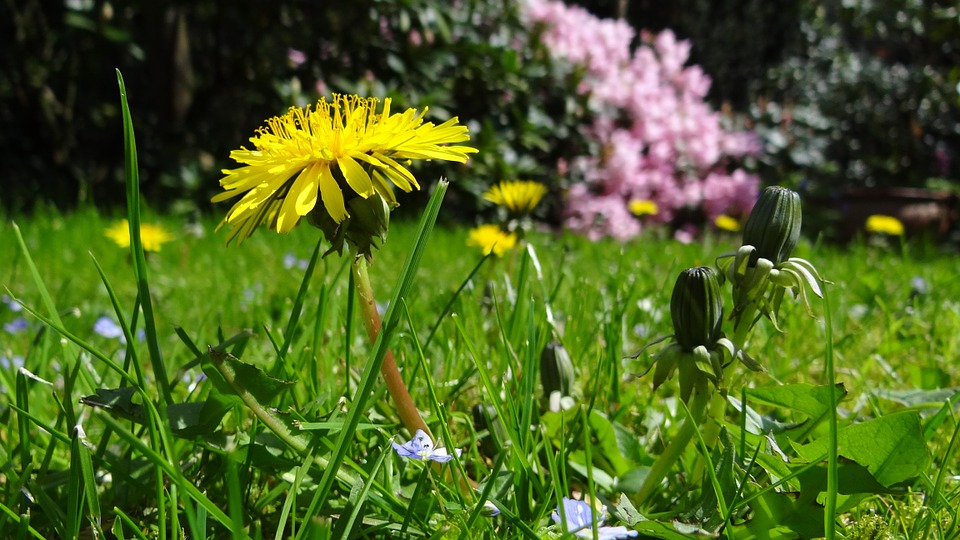
We become easily distracted these days with displays of aggression, suppression, destruction and abolition in the media, and of course these themes are reflected in the many-a-gardens of today. This is perhaps best epitomised by man’s (or woman’s) attempt to rule dominion over the dandelions in their yards, reflecting a current state of detachment and separation from nature. This could be seen to further extend to the environmental crisis’ that we are seeing across the globe. A wake up call seems to be required, reminding us that we come from stock who once upon a time shared an essential, interdependent relationship with plants and the rest of nature. Dandelion seems to offer a humbling reminder of the wisdom and means for survival that plants have shared with us throughout time.
Dandelion presents us an opportunity to tap into our roots, and to remember where we have come from,while highlighting the significance and importance of our traditional land-owners’ voices. On that note, stand tall, strong and in solidarity with those who rise to protect nature and all its inhabitants. Peace.

